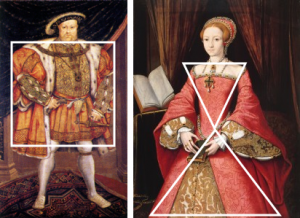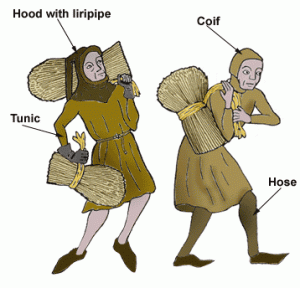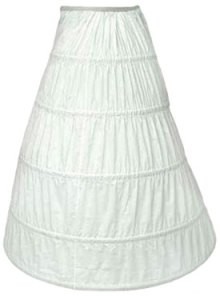We are currently researching all about what the Tudors would wear.
Here are some useful links:-
Rich and poor clothes
Dress rich Tudor men and women in clothes you design!
What did the poor wear?
- Poor people needed clothes to keep warm. They wore any clothes they could find or were given.
Usually the clothes were made of wool and were very simple.
The colours were very dull and they were also very cheap.
Click on the link to see Horrible Histories transform a Tudor peasant into a Tudor Lord!
Tudor Underwear
The Farthingale
Tudor Ladies had Lots of Different Underwear
They wore:
- Smock or chemise – a short shift worn under a dress
- Stockings or hose – clothing for legs
- Corset – a garment with bones in it, designed to tighten the waist
- Bodice – a sleeveless vest tightly laced in front
- Farthingale – a linen petticoat with whalebone hoops
- Roll or Rowle – tied around the waist widening the skirt
- Stomacher – a triangular-shaped fabric that holds the dress together
- Petticoat – a long draw-string skirt
- Kirtle – an underskirt
- Forepart – a very decorated underskirt
- Partlet – was a high necked top designed to cover a low-necked dress
It must have taken hours to get dressed!
Want to try for yourself? Click here to play the Tudor Dressing Up game.
Henry VIII – the world’s best dressed monarch?
Henry VIII’s wardrobe featured some of the world’s richest clothes and jewellery. Click on the link to find out more
Tudor Shoes
Tudor streets were not covered with tarmac. When it rained, and especially in winter, the streets would turn to thick mud. Towns and cities were very unhealthy places. There were no proper sewers (except in Bristol) and all kitchen and toilet waste was thrown into the streets where it lay in heaps at street corners. It was very hard to keep your feet clean and dry under these conditions. Shoes were very rarely waterproof so rain, snow and mud, let alone the sewage lying around would have made getting about on foot very unpleasant.
Several types of overshoe were devised to raise the foot further above the ground; these were known as “Pattens”, wooden shoes with blocks underneath which gave extra height to the wearer. They were designed to be slipped on over an ordinary shoe. Pattens first appeared in the 14th century and by Tudor times were worn by everybody. These were very plain, which suggests that they belonged to the poorer classes. Those belonging to a wealthy person would probably have had some decoration on the leather.




